A quarter of a century ago NASA launched the Hubble Space Telescope into the Earth orbit. "Even the most optimistic person… in 1990 couldn't have predicted the degree to which Hubble would re-write our astrophysics and planetary science textbooks," one of the launch’s directors, Charlie Bolden, wrote. But the Hubble did revolutionize the science.
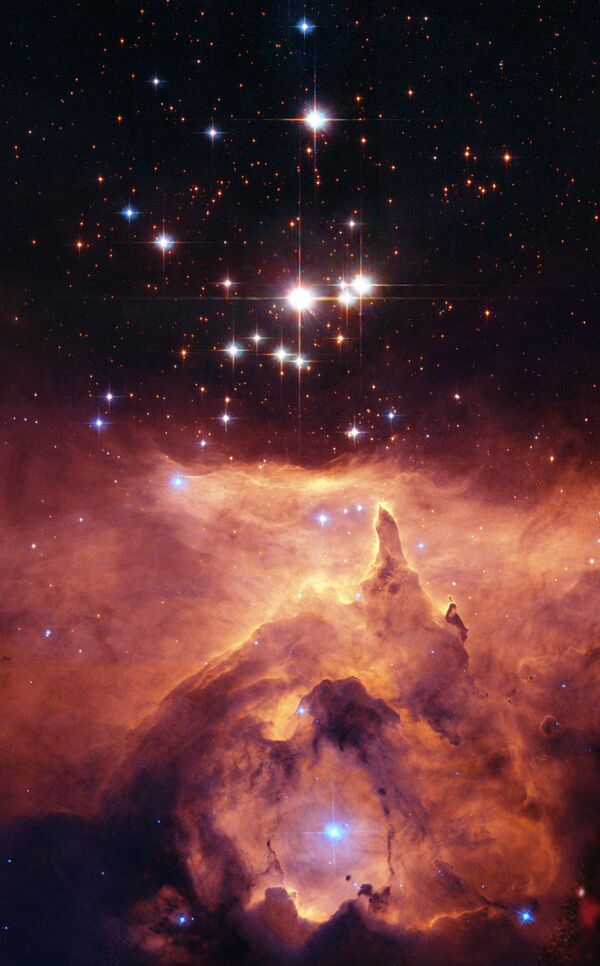
The Hubble was delivered into the orbit by Discovery Shuttle on April 24, 1990.
Above: The small open star cluster Pismis 24 lies in the core of the large emission nebula NGC 6357 in Scorpius, about 8,000 light-years away from Earth. Some of the stars in this cluster are extremely massive and emit intense ultraviolet radiation.
Above: The small open star cluster Pismis 24 lies in the core of the large emission nebula NGC 6357 in Scorpius, about 8,000 light-years away from Earth. Some of the stars in this cluster are extremely massive and emit intense ultraviolet radiation.
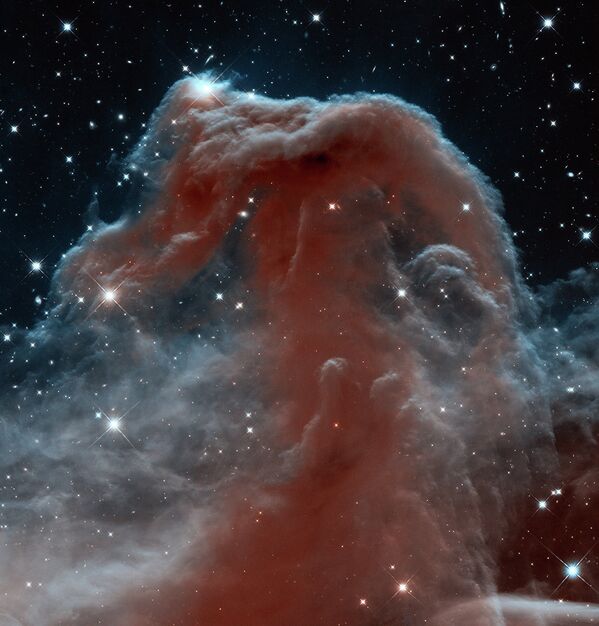
A defect in its main mirror blurred the photos, but scientists rectified the flaw.
Above: Looking like an apparition rising from whitecaps of interstellar foam, the iconic Horsehead Nebula has graced astronomy books ever since its discovery over a century ago. The nebula is a favorite target for amateur and professional astronomers.
Above: Looking like an apparition rising from whitecaps of interstellar foam, the iconic Horsehead Nebula has graced astronomy books ever since its discovery over a century ago. The nebula is a favorite target for amateur and professional astronomers.
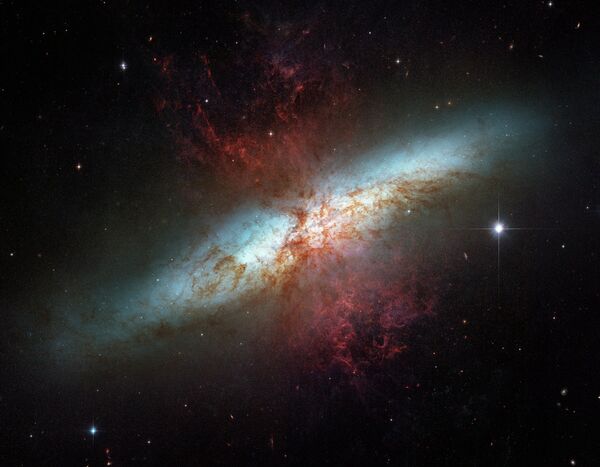
After four visits, specialists considerably boosted the telescope’s technical capabilities.
Above: This mosaic image is the sharpest wide-angle view ever obtained of Messier 82 (M82). The galaxy is remarkable for its bright blue disk, webs of shredded clouds, and fiery-looking plumes of glowing hydrogen blasting out of its central regions.
Above: This mosaic image is the sharpest wide-angle view ever obtained of Messier 82 (M82). The galaxy is remarkable for its bright blue disk, webs of shredded clouds, and fiery-looking plumes of glowing hydrogen blasting out of its central regions.
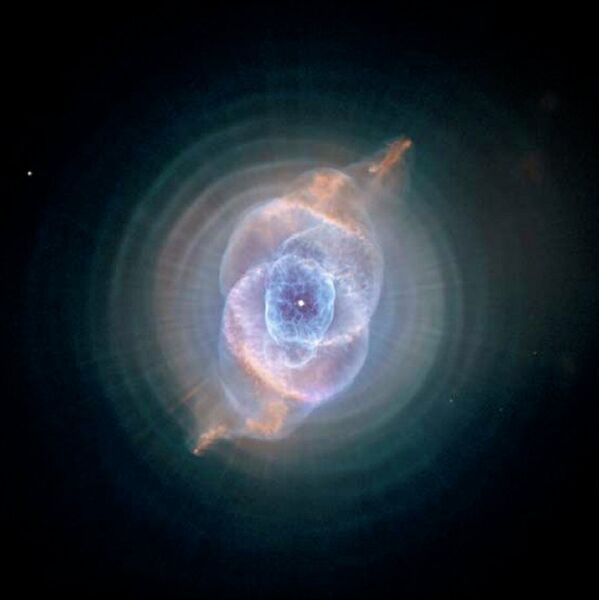
It is hard to overestimate Hubble’s contribution to the world of science. Thanks to the Hubble’s observation of pulsars, astronomers determined the Universe’s age to be about 13,8 billion years.
Above: In this detailed view, the so-called Cat's Eye Nebula looks like the penetrating eye of the disembodied sorcerer Sauron from the film adaptation of "The Lord of the Rings."
Above: In this detailed view, the so-called Cat's Eye Nebula looks like the penetrating eye of the disembodied sorcerer Sauron from the film adaptation of "The Lord of the Rings."
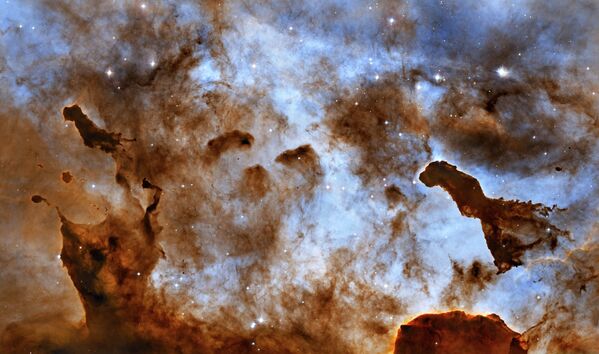
Hubble played the crucial role in detecting that the Universe is expanding with acceleration.
Above: These one-light-year-tall pillars of cold hydrogen and dust, imaged by the Hubble Space Telescope, are located in the Carina Nebula. Violent stellar winds and powerful radiation from massive stars are sculpting the surrounding nebula. Inside the dense structures, new stars may be born.
Above: These one-light-year-tall pillars of cold hydrogen and dust, imaged by the Hubble Space Telescope, are located in the Carina Nebula. Violent stellar winds and powerful radiation from massive stars are sculpting the surrounding nebula. Inside the dense structures, new stars may be born.

It also found critical evidences of supermassive black holes in galaxies’ centers.
Above: The collision of the Antennae galaxies which began more than 100 million years ago and is still occurring, has triggered the formation of millions of stars in clouds of dust and gas in the galaxies. The most massive of these young stars have already sped through their evolution in a few million years and exploded as supernovas.
Above: The collision of the Antennae galaxies which began more than 100 million years ago and is still occurring, has triggered the formation of millions of stars in clouds of dust and gas in the galaxies. The most massive of these young stars have already sped through their evolution in a few million years and exploded as supernovas.
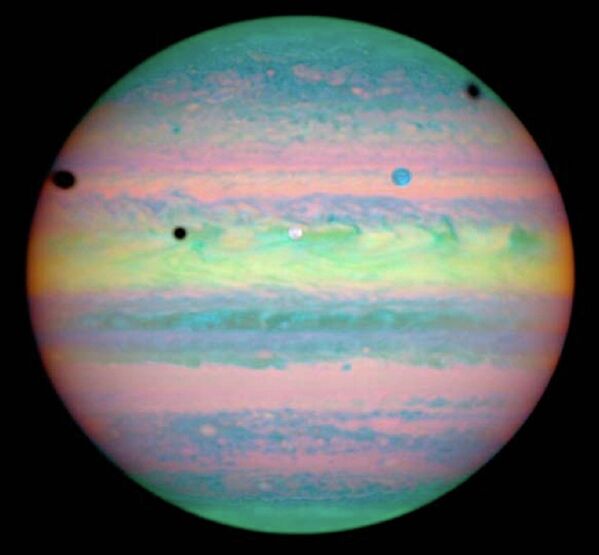
In comparison with Earth-based telescopes, Hubble is capable of looking into the deep past of the Universe by observing the objects formed at the very early stages of its history.
Above: Closer inspection by NASA's Hubble Space Telescope reveals that the spots are actually a rare alignment of three of Jupiter's largest moons – Io, Ganymede, and Callisto – across the planet's face.
Above: Closer inspection by NASA's Hubble Space Telescope reveals that the spots are actually a rare alignment of three of Jupiter's largest moons – Io, Ganymede, and Callisto – across the planet's face.
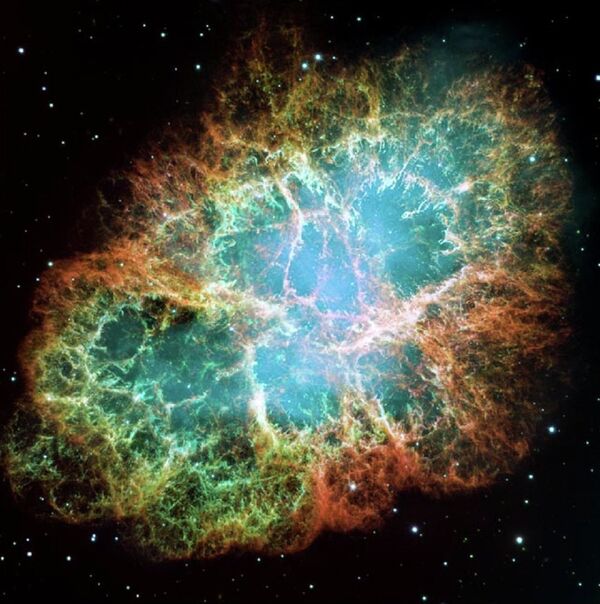
After many days of capturing light beams rushing from the sky’s dark region, Hubble discovered thousands of extremely remote and faint luminous galaxies.
Above: This is a mosaic image, one of the largest ever taken by NASA's Hubble Space Telescope of the Crab Nebula, a six-light-year-wide expanding remnant of a star's supernova explosion. Japanese and Chinese astronomers recorded this violent event nearly 1,000 years ago in 1054, as did, almost certainly, Native Americans.
Above: This is a mosaic image, one of the largest ever taken by NASA's Hubble Space Telescope of the Crab Nebula, a six-light-year-wide expanding remnant of a star's supernova explosion. Japanese and Chinese astronomers recorded this violent event nearly 1,000 years ago in 1054, as did, almost certainly, Native Americans.
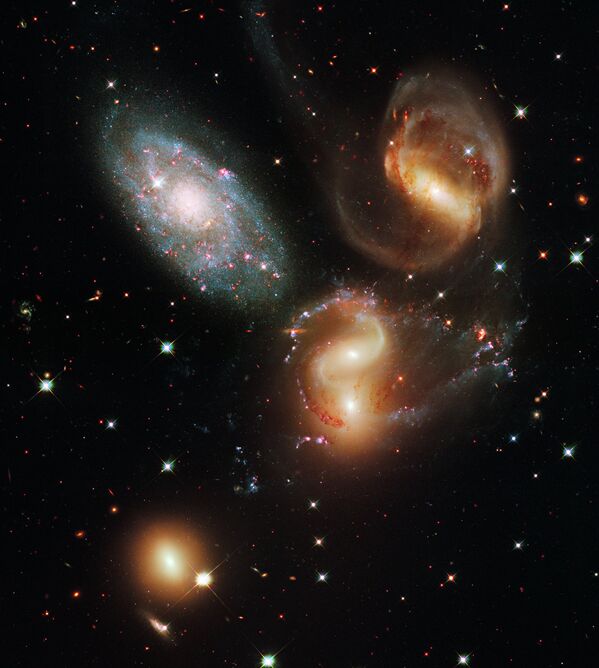
Currently, the telescope is scrutinizing six giant clusters of ancient galaxies in the program “Frontier Fields.”
Above: A clash among members of famous Stephan's Quintet, also known as Hickson Compact Group 92, reveals an assortment of stars across a wide color range, from young, blue stars to aging, red stars.
Above: A clash among members of famous Stephan's Quintet, also known as Hickson Compact Group 92, reveals an assortment of stars across a wide color range, from young, blue stars to aging, red stars.
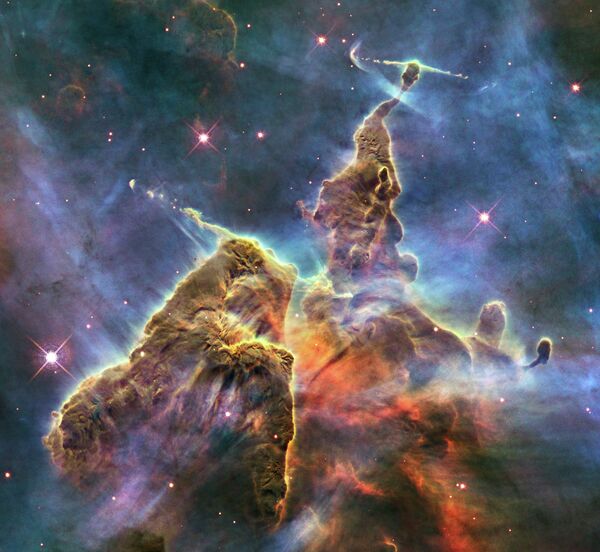
Using the gravitational lensing effect, Hubble is capable of seeing even the most distant past of the Universe and galaxies hidden by others.
Above: The image captures a chaotic activity atop a three-light-year-tall pillar of gas and dust that is being eaten away by the brilliant light from nearby bright stars. The pillar is also being assaulted from within, as infant stars buried inside it fire off jets of gas that can be seen streaming from towering peaks.
Above: The image captures a chaotic activity atop a three-light-year-tall pillar of gas and dust that is being eaten away by the brilliant light from nearby bright stars. The pillar is also being assaulted from within, as infant stars buried inside it fire off jets of gas that can be seen streaming from towering peaks.
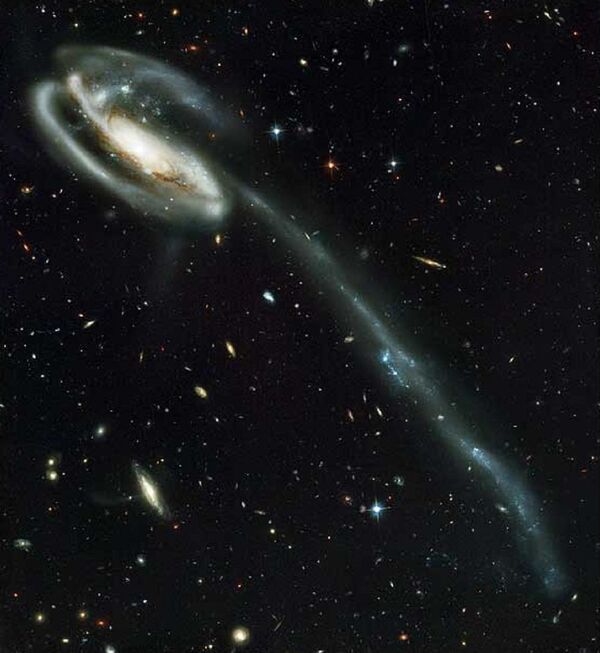
Nowadays, Hubble is able to “see” objects emitting light 10-50 times fainter than previously observed ones.
Against a stunning backdrop of thousands of galaxies, this odd-looking spiral galaxy Tadpole, with the long streamer of stars appears to be racing through space, like a runaway pinwheel firework.
Against a stunning backdrop of thousands of galaxies, this odd-looking spiral galaxy Tadpole, with the long streamer of stars appears to be racing through space, like a runaway pinwheel firework.

Hubble provided the maps of the surface of Pluto and Eris.
Above: "Starry Night," Vincent van Gogh's famous painting, is so similar to the latest view of an expanding halo of light around a distant star, named V838 Monocerotis (V838 Mon).
Above: "Starry Night," Vincent van Gogh's famous painting, is so similar to the latest view of an expanding halo of light around a distant star, named V838 Monocerotis (V838 Mon).
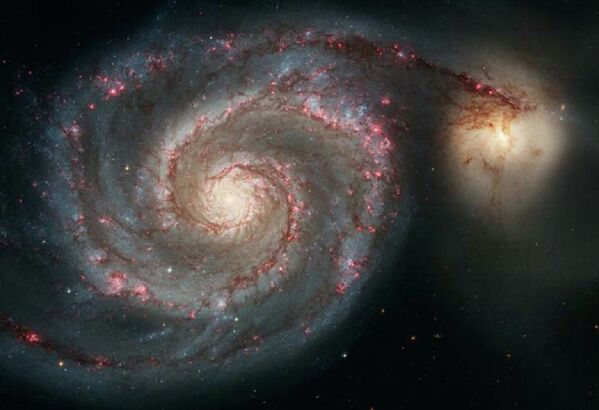
Astronomers estimate that the space telescope will serve for at least five years more.
Above: The graceful, winding arms of the majestic spiral galaxy M51 (NGC 5194) appear like a grand spiral staircase sweeping through space. They are actually long lanes of stars and gas laced with dust.
Above: The graceful, winding arms of the majestic spiral galaxy M51 (NGC 5194) appear like a grand spiral staircase sweeping through space. They are actually long lanes of stars and gas laced with dust.
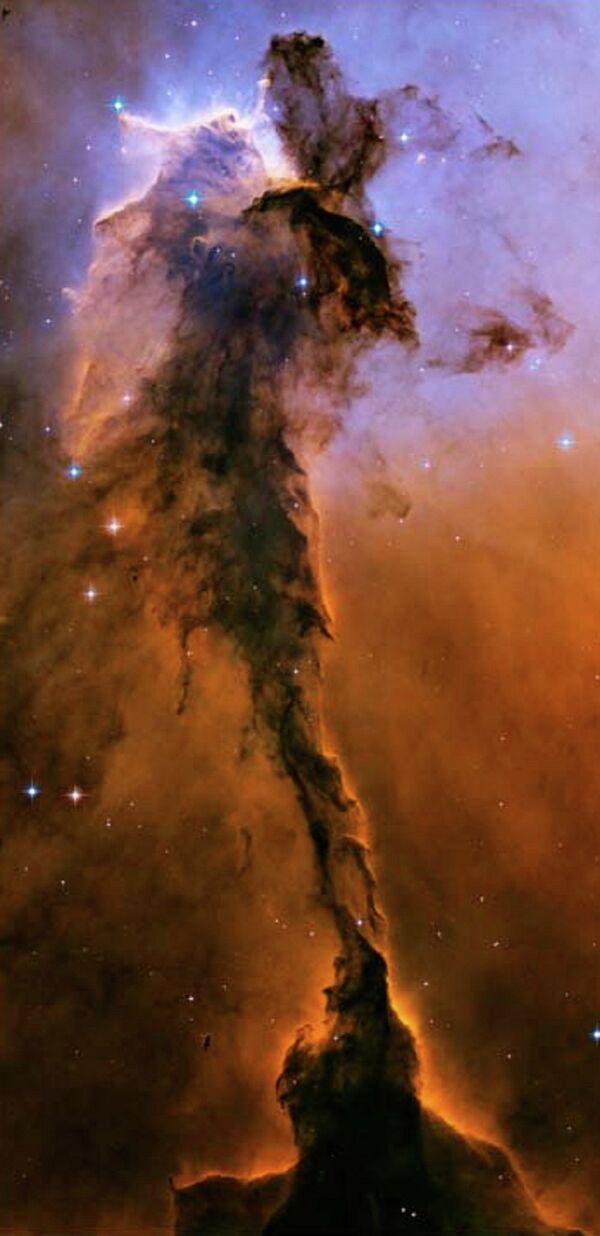
The James Webb space telescope is the Hubble’s successor and is set to be launched in 2018. While it takes the Hubble weeks to obtain photographs, the James Webb will do it within hours.
Above: Appearing like a winged fairy-tale creature poised on a pedestal, this object is actually a billowing tower of cold gas and dust rising from a stellar nursery called the Eagle Nebula. The soaring tower is 9.5 light-years or about 57 trillion miles high, about twice the distance from our Sun to the next nearest star.
Above: Appearing like a winged fairy-tale creature poised on a pedestal, this object is actually a billowing tower of cold gas and dust rising from a stellar nursery called the Eagle Nebula. The soaring tower is 9.5 light-years or about 57 trillion miles high, about twice the distance from our Sun to the next nearest star.

